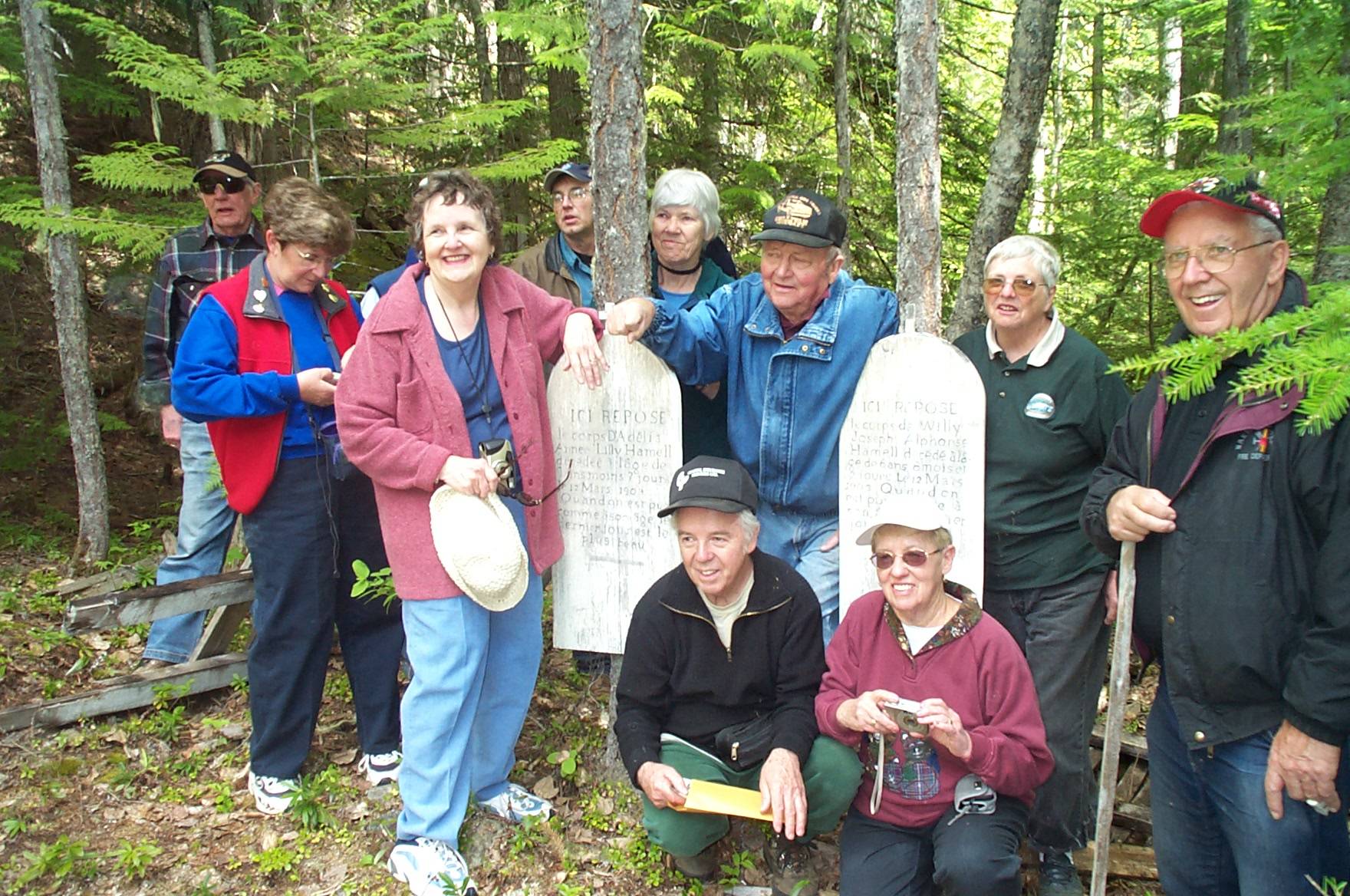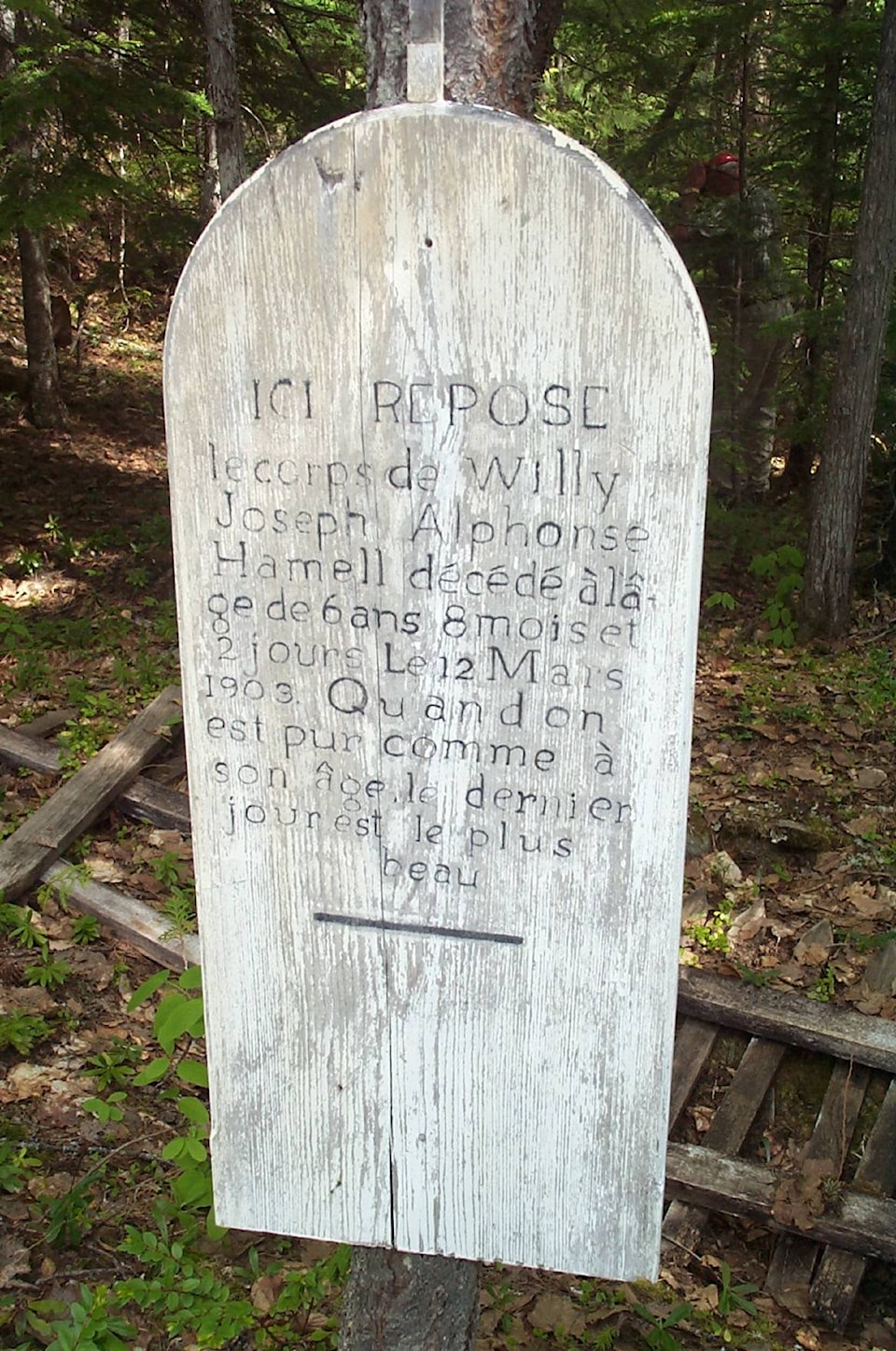On twin gravemarkers in West Kootenay’s most remote cemetery appears a poignant epitaph by a 19th-century French poet.
The Hamel siblings, Adélia Annee Lilly and Willy Joseph Alphonse, died at Comaplix, on the northeast arm of Upper Arrow Lake, in 1903.
Their gravemarkers read: Quand on est pur comme a ton age le dernier jour est le plus beau. Translated, “When one is pure as at your age the last day is the most beautiful.”
The little cemetery is accessible only by boat and only if you know where to look. Its existence is peculiar. Although Comaplix was a sawmill town from 1898 to 1915, neighbouring communities such as Beaton and Camborne usually buried their dead at Revelstoke, Arrowhead, or further flung points.
Recently, thanks to online genealogical sites and Google, new information has come to light on the Hamel family and the epitaph on the children’s graves.
Their father, Alphonse Joseph Hamel (also spelled Hamell and Hammill), was born in 1859 in St. Jean Deschaillons, Que. His wife, Marie Fridoline Hebert, was born in 1871 in St. Edouard, Que.
On the 1891 census both were shown as single and living in New Westminster. Alphonse was working as a cook in a boarding house while Marie’s entire family was farming; her mother had recently died in Richmond. They wed at Vancouver on Nov. 15, 1892, when Alphonse was 33 and Marie was 22.
According to the 1901 census, their daughter Lilly was born on May 19, 1894, but her birth was not registered. Her death registration indicates she was born at Steveston.
Another child was also born to the family at Steveston on Sept. 7, 1896, but stillborn.
The Hamels moved to the interior sometime in the next two years, as the 1901 census indicates Willy was born on July 10, 1898 and his death registration gives his place of birth as Revelstoke. These dates of birth do not square with Lilly and Willy’s grave markers or death registrations. The census return would suggest they were eight and four when they died, respectively; the death registrations eight and three; and the grave markers nine and six.
The Revelstoke Herald of Aug. 21, 1901 reported: “Mr. Hamell had quite a little excitement at his ranche [sic] the other day. A brown bear came down to the ranche and carried one of his best pigs. Mr. Hammil offered $10 to any person who would shoot the bear. Mr. Devebro [sic] of Comaplix accepted the offer and succeeded in killing the bear. Mr. Hamill’s ranch, which is situated about three miles from Comaplix, is the popular stopping place between Comaplix and Camborne. The ranch produces an excellent variety of vegetables with which Mr. Hamill supplies the local market.“
A son, Ernest George, was born to the Hamels at Revelstoke on July 21, 1902.
But Alphonse and Marie faced unimaginable grief on March 12, 1903 when malignant scarlet fever claimed both Lilly and Willy. They became the two burials at the Comaplix cemetery. However, news of their passing does not seem to have appeared in any newspaper.
The epitaph on their gravemarkers came from a poem by Jean Reboul entitled L’Ange Et L’Enfant (The Angel and the Child), written in 1828. Other translations include: “Of so unspotted and pure a thing/The loveliest morning is still the last,” and “To one within thy tender age/Thy last must be thy brightest day.”
Marie Hamel gave birth to a daughter at Comaplix on Feb. 27, 1904, named Fridoline.
That August the family sold their 160-acre farm to John de Rose for $3,000 and moved to Winnipeg. There another daughter, Louise Anne, was born in 1906. Sometime in the next two years they moved to the US, where George Joseph was born in 1911 at Worcester, Massachusetts and Alphonse Joseph was born in at Manchester, New Hampshire.
On the 1910 US census, the family is shown running a grocery store in Worcester. On the 1920 and 1930 census, Alphonse is a napper at a cotton mill in Manchester (creating the fuzzy nap on flannel and other textiles).
Marie Fridoline Hebert Hamel died of liver cancer on Dec. 13, 1930 at Manchester, New Hampshire, age 59. Alphonse Joseph Hamel died July 19, 1949, also at Manchester, age 90.
Hearteningly, their remaining children all lived long lives. Louise, the last of the siblings, died in Bedford, New Hampshire in 2002, age 95.
Did they grow up knowing about their brother and sister buried in Comaplix or was it too painful to speak of? It’s not known.
The cemetery itself was not used after 1925 and was lost by the 1960s. It was rediscovered in 1973 by Milton and Len Parent, who found the Hamel children’s wooden headboards had survived the ravages of weather and time. By the mid-1980s, however, they were fallen over and decaying. Parent, by then president of the Arrow Lakes Historical Society, took them to Nakusp where the epitaphs were translated and retouched. They were returned to the cemetery in 1994 and affixed to trees.
A longer version of this story, with the full text of the Reboul poem in French and English, can be found at https://tinyurl.com/yb9ws8rw

